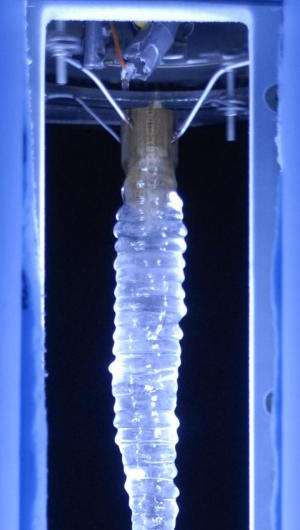Online Icicle Atlas offers jackpot of scientific data

Anyone who might be dreading the end of winter or cannot wait until it arrives again can now enjoy the beauty and mystery of icicles all year long with the Icicle Atlas.
A giant trove of data on icicle shapes and growth, the atlas contains over 230,000 images as well as hundreds of time lapse movies of icicles grown under controlled conditions in the laboratory. It's all free for download by anyone, thanks to years of research by physicists at the University of Toronto.
"I expect to be surprised by what uses people find for it," said Stephen Morris, a professor in U of T's Department of Physics who, with former graduate student Antony Chen, has been studying icicle morphology for several years. "Of course we hope to mine the data for more scientific results, as we have only scratched the surface on that. But the non-scientific applications are just as exciting."
Morris suggested there are endless possibilities for the data, from making a 3D-printed icicle to hang on a Christmas tree, to producing an animated growing icicle for a Hollywood movie. Composer Jimmie LeBlanc and media artist Fareena Chanda are already at work on an art installation using elements of the icicle data that will debut at an event called Collide, performed by the Continuum Contemporary Music ensemble in May in Toronto.
An icicle's shape is a chicken-and-egg scenario between the flow of super-cold water and an evolving shape. The shape determines the flow and flow determines the shape, which makes explaining the icicle's emergent shape tricky.
"Like snowflakes, every icicle has its own unique charm," said Morris. "Our motivation is pure curiosity about natural patterns, but the study of ice growth has applications to serious engineering hazards including ice accumulation on airplanes, ships and power lines."
"We live in a strange universe where we know the mass of the Higgs boson, but we can't calculate the shape of an icicle," said Morris. "Icicles made with tiny amounts of dissolved salt are covered with ripples that are always nearly one centimetre in size. Nobody knows why."

The Icicle Atlas database will be archived by the University of Toronto Libraries and is freely available online under a Creative Commons license.
More information: The Icicle Atlas is located at www.physics.utoronto.ca/Icicle_Atlas
Provided by University of Toronto




















